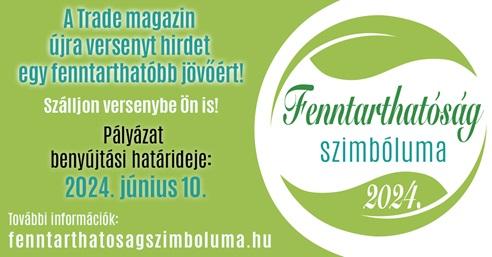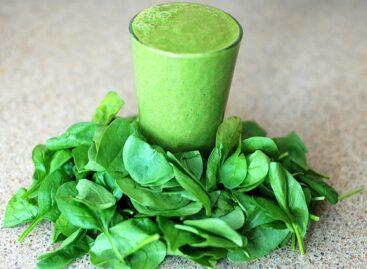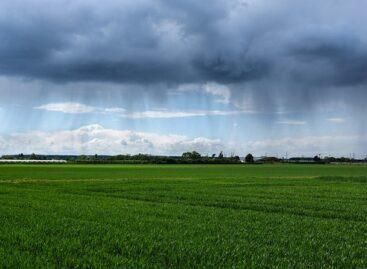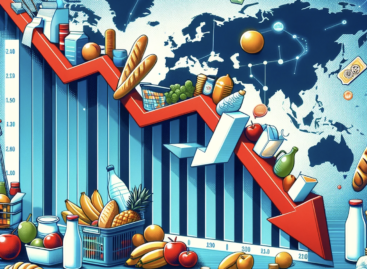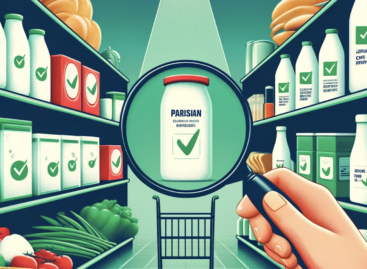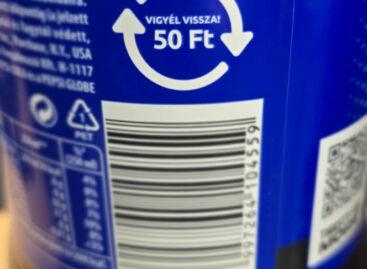High-quality Hungarian fish can be on the Christmas table this year as well
As in previous years, Hungarian fish producers are preparing for the Christmas season with high-quality Hungarian fish. The star of the festive offer this year will be the carp, which is still the favorite fish species of Hungarians – revealed the National Chamber of Agriculture (NAK), the Hungarian Aquaculture and Fisheries Association (MA-HAL) and the Hungarian National Fishing Association (MOHOSZ) at a joint press conference.

(Photo: NAK/Zsolt Lévai)
After last year’s severe drought, the weather was kinder to the domestic fishing industry this year. The high rainfall created the right conditions for successful production: the players in the sector were able to fill the fish ponds up to the operating water level, thanks to which they were able to provide suitable living conditions for the fish. The decrease in feed prices had a positive effect on the reduction of production costs. At the same time, since most of the lake farms used expensive feed purchased last year until the harvest, the decrease in feed prices will mostly affect the price of fish next year. Despite this, the fish producers gave good news to the consumers at the joint press conference organized by NAK, MA-HAL and MOHOSZ: the price of Christmas fish may be lower this year compared to last year’s prices. Traders will be able to ask HUF 1,790-2,300 for a kilo of live carp, while the price of live catfish will be around HUF 4,000. As in the past year, customers can choose from a wide selection this year, and in addition to live fish, Hungarian fish will also be available in processed form – horseshoe, fillet, bone, offal – at the vendors. Due to the lower prices, it is expected that buyers will be more courageous in choosing among the high-quality, healthy Hungarian fish.
The Christmas season starts at the beginning of December, from when the lake farms start selling fish to the public
The favorite of the season will certainly be carp again this year, but at the same time, the lake farms await consumers with a wide range of other species as well. Although domestic fish consumption is increasing every year, the largest amount is still concentrated during the Christmas period. According to the Agrárközgazdasági Intézet (AKI), the average annual fish consumption per capita in Hungary was 6.52 kg in 2021, which is significantly lower than that of other EU member states (in 2020, the EU average was approx. 23.3 kg). There is therefore plenty of room for increasing consumption in our country.
Hungary is in a fortunate position, thanks to its ideal geographical location, it can provide consumers with excellent quality freshwater fish
What’s more, since fish farmers produce more fish than domestic demand, they are able to satisfy export demands as well. Carp and predators (perch, catfish) are also in high demand on foreign markets. Most fish are shipped to neighboring countries, but there is also demand for Hungarian fish from the Czech Republic and Poland. In addition, pond farms play an active role in the supply of fish to natural waters.
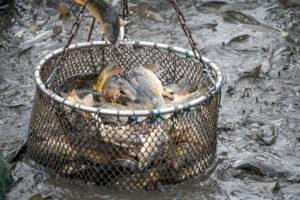
(Photo: NAK/Zsolt Lévai)
The domestic fishing market has strengthened tremendously in recent years
In Hungary, there are a total of 157,443 hectares of water areas managed for fishing purposes, of which 134,831 hectares belong to the MOHOSZ organizational system. Compared to previous years, in 2023 MOHOSZ launched several support programs, contributing significant sums to the costs of stocking fish in fishing waters, which support programs significantly transform the stocking structure of our fishing waters in accordance with the needs. In 2022, the amount of fish planted by organizations belonging to the MOHOSZ system was a total of 4,149 tons, and the amount of fish caught by fishermen was 4,478.3 tons (of which 2,980.1 tons were carp). Continuous deployment is important for sustainability, as there are more than 800,000 registered fishermen in Hungary. Since fish is a healthy food, it is important to emphasize that the fish caught and eaten by fishermen contributes significantly to a healthy diet, and also continuously strengthens the possibilities of fish production through the transfer of plantings.
NAK
Related news
The foreign trade balance of fresh spinach was negative in 2023
In Hungary, spinach is one of the earliest outdoor vegetables. According…
Read more >Agrometeorology: more precipitation may fall in Transdanubia, but it will hardly rain in many places in Tiszántúl
Showers will irrigate first the southwestern and then the northeastern…
Read more >Related news
OECD: Food price inflation fell sharply in most countries
The Paris-based Organization for Economic Cooperation and Development, the OECD,…
Read more >Nébih experts examined the cheapest foods
In order to protect consumers, the National Food Chain Safety…
Read more >Szentkirályi Magyarország’s deposit-fee PET bottles are already on store shelves
Szentkirályi Hungary was one of the first to start the…
Read more >
